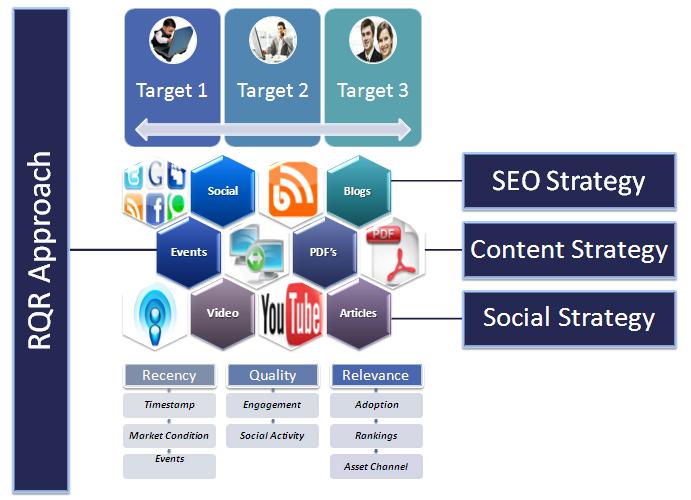B2B SEO: 4 Quick Tips To Make Your Content Model Fresh
Thanksgiving! There is nothing like the taste of fresh turkey when it’s hot out of the oven. However, the leftovers quickly lose their appeal after sitting in the fridge for a few days. Given Google’s Freshness update, B2B content could suffer the same fate. The Change At Hand The “Freshness” update is Google’s latest algorithm […]
Thanksgiving! There is nothing like the taste of fresh turkey when it’s hot out of the oven. However, the leftovers quickly lose their appeal after sitting in the fridge for a few days. Given Google’s Freshness update, B2B content could suffer the same fate.
The Change At Hand
The “Freshness” update is Google’s latest algorithm change that took place on November 3rd and has the search world in a stir. In a nutshell, Freshness is an expansion by Google in its efforts to provide relevance when query intent matches a topic that is time sensitive.
But will the change have much of an effect? In a word, yes. It is expected to affect 35% of searches, and with some of the implications to the SERP page and results, this is major shift that marketers need to take into account.
Taking Action
Considering the above, B2B marketers should take a serious look at their search strategy to ensure the update hasn’t caused them to lose position or miss-out on the opportunity to gain market share.
One immediate opportunity is the use of RSS feeds to populate the freshlinks. This will return more relevant insight to the end user on time sensitive topics, and also affects organic performance by pushing competitive results down in the SERP.
Creating An RQR Model For B2B Search
B2B marketers also might want to tap into something that direct response marketers have been using for years: an RFM model (Recency, Frequency, and Monetary value).
In the direct response realm, the term Recency refers to the amount of time that has passed since a customer engaged with a brand, and it represents one of the most important metrics to monitor. Given the Freshness update, Recency should now be a key element in B2B search strategy.
To make the model work, B2B marketers should adjust it with search positioning in mind – perhaps something like RQR (Recency, Quality, and Relevance). Whatever you call it, the point is that Recency should be a driving force in your B2B strategy going forward. Why?
Besides the fact that relevant content is king (more so now than ever), keep in mind that the B2B sales funnel is changing; it is becoming a more diffuse process where customers are lengthening the buying cycle and often spend considerable time researching business cases before making a purchase decision.
In other words, they are doing their homework! That means you need to continually adjust your content to ensure it serves your audience. It must help them understand your offerings based on their needs, provide them with useful information about the benefits they would derive, and educate them on the critical topics that are bringing them to the marketplace.
4 Steps To Keep Your Content Fresh & Relevant
Below are four steps to create a search-centric RQR SEO model.
Figure 1. Process to Weight Recency, Quality and Relevance in Search
1. Create Targets and “Look-alikes”
The first step is to understand why customers are in need of your service, and how they tend to behave. With some simple Q&A, you can begin to build targets for your content based on what you know prospects seek in the buying process.
In turn, you can then leverage paid search to test creative and understand the topics which most resonant with your customers. These learnings will help you build effective target personas.
2. Take Stock
Once you know the “who” of your approach, you need to focus on the “what.” That means taking inventory of your digital assets. You need to gain an understanding of what content, if any, your customers and prospects use to help them make purchase decisions.
What are the topics that are on their radar today, and how does your value proposition apply to these topics? But make sure your assessment is rigorous, and doesn’t overlook material that has “atrophied,” and no longer speaks to the needs of your audience. This step will help you see what you truly have to work with, and help you identify where content gaps exist.
3. Create Or Expand Your Content Strategy
Now it’s time to dive into the channels that offer the quickest wins (based on your research). For many B2B marketers, this will most likely include a blog, RSS feed, and press release optimization.
But it also might include videos, user generated content, peer reviews, and analyst relations optimization. Once you have finalized the channels you want to pursue, keep in mind that your content strategy also needs to take into consideration your brand’s equity, goals, competitor presence, and theme prioritization.
4. Measure The Impact!
After engaging in a content strategy project, it can be difficult to understand how well the content is performing and how to improve your website’s performance.
One method is to create a content tracking analytics program to measure each theme’s content on a site. By factoring various KPI’s like reach, relevance, and conversion metrics, you can determine how each category of content is performing.
Come the Monday after Thanksgiving, when you’ve already grown weary of the holiday’s leftovers, think about your search strategy and whether or not it is still fresh. Now it’s more important than ever to make changes to it so your content stays current and relevant. After all, your audience doesn’t want to consume leftovers all year long.
Opinions expressed in this article are those of the guest author and not necessarily Search Engine Land. Staff authors are listed here.
Related stories
New on Search Engine Land
